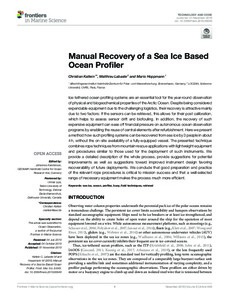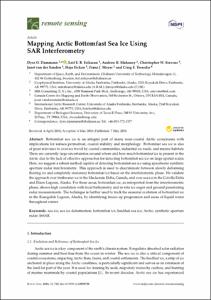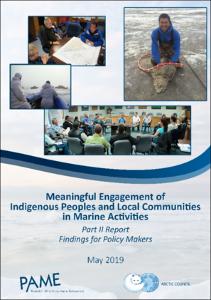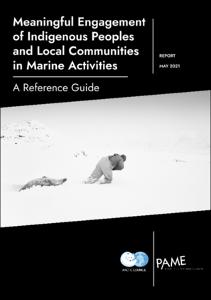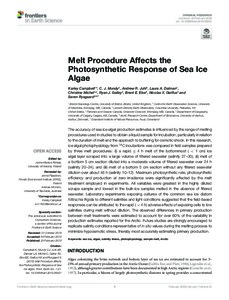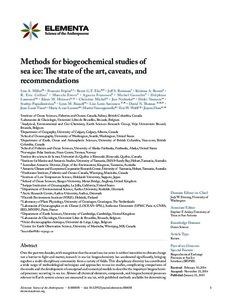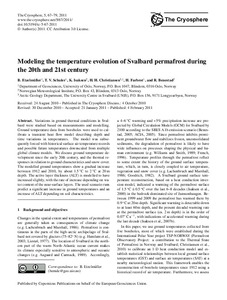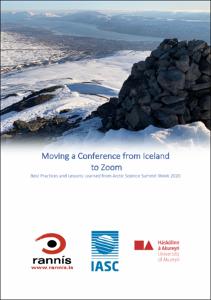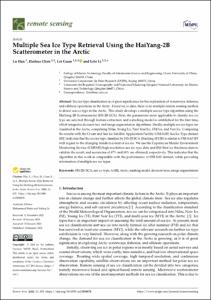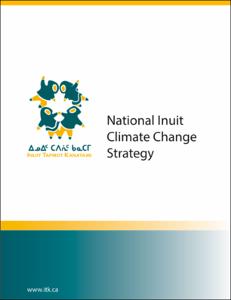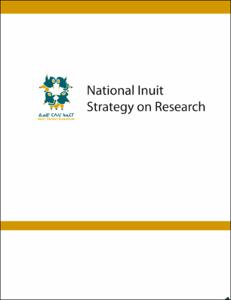Browsing CAPARDUS Practices by Title
Now showing items 148-167 of 244
-
Management and utilization of seals in Greenland, February 2015. Addendum to: White Paper on Management and Utilization of Seals in Greenland (April 2012).
(Government of Greenland, Department of Fisheries, Hunting & Agriculture, Greenland, 2015)This document is an addendum to the White Paper on Management and Utilization of Seals in Greenland from April 2012 and the two documents should be read together. Box 1: Abundant seal populations Harp seal: Advice on ... -
Management and utilization of seals in Greenland. Revised April 2012.
(Government of Greenland, Department of Fisheries, Hunting & Agriculture, Greenland, 2012)1. Species: There are six different species of seals in the Greenlandic waters. Five of the species have been hunted for centuries, but today the catch is focused on the harp seal, ringed seal and hooded seal with great ... -
Manaus Letter: Recommendations for the Participatory Monitoring of Biodiversity.
(Participatory Monitoring and Management Partnership (PMMP), Manaus, Brasil, 2015)Recommendations regarding best practices for participatory, community-based monitoring of biodiversity and natural resource use developed by the participants of the large International Seminar on Participatory Monitoring ... -
Manual Recovery of a Sea Ice Based Ocean Profiler.
(2019)Ice-tethered ocean profiling systems are an essential tool for the year-round observation of physical and biogeochemical properties of the Arctic Ocean. Despite being considered expendable equipment due to the challenging ... -
Mapping Arctic Bottomfast Sea Ice Using SAR Interferometry.
(2018)Bottomfast sea ice is an integral part of many near-coastal Arctic ecosystems with implications for subsea permafrost, coastal stability and morphology. Bottomfast sea ice is also of great relevance to over-ice travel by ... -
Marine mammal ecology and health: finding common ground between conventional science and indigenous knowledge to track arctic ecosystem variability.
(2019)Marine mammals respond to, and thereby reflect, changes in Arctic ecosystems that are important both to practitioners of conventional science (CS) and to holders of indigenous knowledge (IK). Although often seen as contrasting ... -
Marine snow morphology illuminates the evolution of phytoplankton blooms and determines their subsequent vertical export.
(2021)The organic carbon produced in the ocean’s surface by phytoplankton is either passed through the food web or exported to the ocean interior as marine snow. The rate and efficiency of such vertical export strongly depend ... -
Meaningful engagement of Indigenous Peoples and Local Communities in marine activities. Part II Report: Findings for Policy Makers.
(Protection of the Arctic Marine Environment (PAME), Akureyri, Norway, 2019)Indigenous peoples and local communities living in coastal communities in the Arctic have always depended on the sea for food, transportation, cultural and spiritual identity and social well-being. Increasingly, the sea ... -
Meaningful Engagement of Indigenous Peoples and Local Communities in Marine Activities: A Reference Guide.
(Protection of the Arctic Marine Environment (PAME), Akureyri, Iceland, 2021)This Reference Guide is meant to familiarize proponents of actions or activities in the Arctic and Indigenous Peoples and local communities with good practices for meaningful engagement. It is based on the Meaningful ... -
Melt Procedure Affects the Photosynthetic Response of Sea Ice Algae.
(2019)The accuracy of sea ice algal production estimates is influenced by the range of melting procedures used in studies to obtain a liquid sample for incubation, particularly in relation to the duration of melt and the ... -
A method for evaluating operational implications of regulatory constraints on Arctic shipping.
(2022)Development of effective marine policy necessitates evidence-based, data-driven evaluations of the effects of regulatory constraints on operations. This is essential to better understand implications of policy decisions ... -
A method to extract fishers’ knowledge (FK) to generate evidence for sustainable management of fishing gears.
(2019)The dangerous effects of Abandoned, Lost or Discarded Fishing Gears (ALDFG) is documented in the literature. However, there exists an overall lack of understanding in quantifying the pollution loads of fishing gears (FG) ... -
Methods for biogeochemical studies of sea ice: the state of the art, caveats, and recommendations.
(2015)Over the past two decades, with recognition that the ocean’s sea-ice cover is neither insensitive to climate change nor a barrier to light and matter, research in sea-ice biogeochemistry has accelerated significantly, ... -
Modeling Functional Organic Chemistry in Arctic Rivers: An Idealized Siberian System.
(2020)Rivers of the Arctic will become ever more important for the global climate, since they carry a majority of continental dissolved organic carbon flux into the rapidly changing polar ocean. Aqueous organics comprise a wide ... -
Modeling the temperature evolution of Svalbard permafrost during the 20th and 21st century.
(2011)Variations in ground thermal conditions in Svalbard were studied based on measurements and modelling. Ground temperature data from boreholes were used to calibrate a transient heat flow model describing depth and time ... -
Moving a Conference from Iceland to Zoom: Best Practices and Lessons Learned from Arctic Science Summit Week 2020.
(International Arctic Science, Akureyri, Iceland, 2020)Arctic Science Summit Week (ASSW) is an annual gathering of Arctic researchers and research organizations, convened by the International Arctic Science Committee (IASC). ASSW provides a venue for coordination, cooperation, ... -
Multiple Sea Ice Type Retrieval Using the HaiYang-2B Scatterometer in the Arctic.
(2023)Sea ice type classification is of great significance for the exploration of waterways, fisheries, and offshore operations in the Arctic. However, to date, there is no multiple remote sensing method to detect sea ice type ... -
The Nansen Legacy Sampling Protocols, Version 1.
(Svalbard Integrated Arctic Earth Observing System, Longyearbyen, Norway, 2018)The collection of detailed sampling protocols is crucial tool for the success of the Nansen Legacy, because they ensure o Methodological agreement between the involved researchers o Continuity and comparable data ... -
National Inuit Climate Change Strategy.
(Inuit Tapiriit Kanatami, Ottawa, Canada, 2019)We understand climate change in our homelands, and our leaders are responding to it. Inuit Nunangat is recognized as a global climate change hotspot, garnering national and global concern. We continue to emphasize that ... -
National Inuit Strategy on Research.
(Inuit Tapiriit Kanatami,, Ottawa, Ontario, 2018)Strong public policies, informed by the best available evidence, can support optimal outcomes for Inuit that in turn benefit all Canadians. However, colonial approaches to research endure in Canada that prevent Inuit ...
 Repository of community practices in Ocean Research, Applications and Data/Information Management
Repository of community practices in Ocean Research, Applications and Data/Information Management



